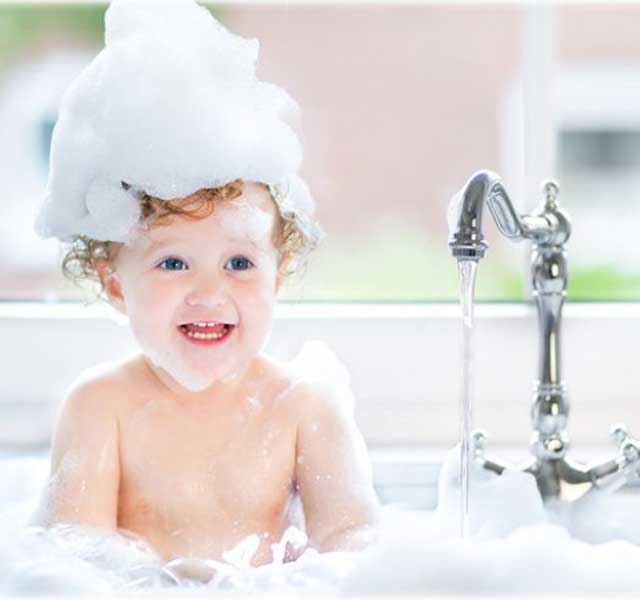What Is Tri-Halo-Methane & How to Remove Tri-Halo-Methane from Your Water?
It’s been well established that all public water systems are contaminated to some level by certain chemical substances. Studies also show that this occurrence is the norm for most city water supplies. In some occasions, these contaminants are hazardous to health. Also, human and industrial activities contribute to the level of Tri-Halo-Methane in water that enters your home through your plumbing system.
One of such numerous chemical compounds that contaminate the water you use for washing, drinking, bathing, and cooking is Trihalomethanes (THMs).
What is Trihalomethane?
Trihalomethanes (THMs) are a group of chemicals that are formed as byproducts when a halogen disinfectant is added to water. The disinfectant reacts naturally with any react inorganic and organic matter that is present in the water. THM chemical combination is quite common. They include chloroform, dibromochloromethane, bromodichloromethane, and bromoform.
Why You Need to Remove Trihalomethanes from Your Water
Trihalomethane is an environmental pollutant and a chemical compound that does not occur naturally in nature. Many THMs are regarded as Cancer Group B carcinogens by the EPA. The U.S Environmental Protection Agency (U.S EPA) has also set 80 parts per billion every year as the limit for disinfectant and disinfection byproducts in the water.
THMs pose some health risks when ingested in high concentration, including kidney injuries, problems with the central nervous system, as well as a possible increase in the bladder, or colorectal cancer.
Although many people are already aware of the dangers of THMs in water and have tried to use regular home water filtration systems to reduce the water THM level, these systems may not remove all the contaminants from the water effectively. Trihalomethane is one of such substances that escape conventional home water filters.
Removal of THMs in the Water
One other reason why removal of Trihalomethane is important is that the THM level in water can increase over time due to temperature, pH level, and the amount of precursors (the organic materials that react with chlorine to form THMs).
Removing Trihalomethane from water can be achieved by reducing chlorination and the precursors through filtration, which is best done once the chlorine mixes with the water. The best home water filtration method for removing Trihalomethane is the whole house water filtration system and drinking water filter.
Can the Reverse Osmosis Systems Remove Trihalomethanes from Water?
Definitely. The reverse osmosis water filtration system can remove the THMs in your water. The Reverse Osmosis System is also perfect for removal of water contaminants like fluoride, lead, chlorine, chloramine, pesticides, and others.
The process involves pushing water through a semipermeable membrane to remove the dissolved inorganic or organic matter from the water, filtering out the impurities, which are then flushed down the drain.
How to Remove Trihalomethanes from Drinking Water
THMs can now be removed from drinking water with ease. Thanks to the recent advances in water filtration technology. According to the EPA, the best approach for controlling the THM level in the treatment plant before the supply is by removing the precursors through advanced coagulation. This process is an optimized filtration process that is designed to maximize the precursor elimination
The U.S EPA also recognizes granular Activated Carbon (GAC) as the best way to filter out the THMs and other Volatile Organic Chemicals (VOCs) from your drinking water at home. The activated carbon filtration is a combination of several water treatment mechanisms such as filtration and adsorption to remove THMs from water effectively, as well as other impurities like cysts, mercury, PCBs, radon, chlorine, and more.
Things to Consider When Choosing a Water Filter
As you take steps to remove Trihalomethane from your water, you could decide to focus on just the faucets or showerhead, or you can deal with the whole house water supply. While a whole house water filter offers the most effective filtration method, it is a bit expensive. So if you are looking to cut cost, the next best option is the point-of-use water filter and shower filter.
Just as filtering the water from your sink is important, water from your bathtub also needs to be treated, especially if you heat your water before use. This is because the concentration of THMs is several times higher in hot water, which causes an increase in the absorption rate of the chemical by the skin pores.
Remember that Trihalomethane is just one of the possible chemical contaminants in your water. Therefore, it wouldn’t be wise to have a specialized filter for THMs removal only. A better approach is to go for a two-stage filtration system or a multi-stage water filtration systems for your shower and sink, which is regarded as the most effective for household water treatment. Dual-stage water filter systems and multi-stage water filters are simple to use and relatively inexpensive.
In recent times, the potential dangers of Trihalomethane in water, as well as other chemical pollutants, is enough to prompt people to purchase a Trihalomethane water filter. Some mineral water filters use one filtration medium only. However, a 2-stage shower water filter and multi-stage water filtration system offers the best price, quality, and performance when it comes to protecting your water from Trihalomethane.
Trihalomethanes are gases. They tend to become airborne in steam when the water is heated. Hence, an under-counter or countertop water filter is important if you want to enjoy the peace of mind that comes with using water that is safe and free any form of organic and inorganic contaminants. So when looking for a water filter for your home, remember that a single carbon filter would not be efficient, especially in the removal of THMs. Instead, buy a whole house filter or shower and drinking water filters with multi-staged filter media.
Do you thing the Trihalomethane level in your water is high? Do you need help removing Trihalomethane from your household water? Reach out to the professionals at Plumber Mate for the best way to remove Trihalomethanes at a budget-friendly fee. We would love to hear from you.


